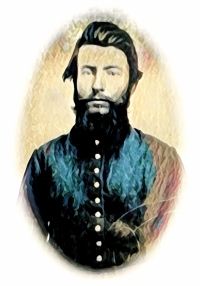History of the 37th Massachusetts Infantry
In late August Major Oliver Edwards was given permission to organize the 37th Regiment of Infantry, mostly drawn from the four western Massachusetts counties. They were mustered into US Service between August 30 and September 4, 1862. They moved to Washington, where they remained for the better part of September, before being sent to Frederick, MD to join Devens’ Brigade, Couch’s Division, 4th Corps, Army of the Potomac. Shortly after, Devens’ unit became part of the 6th Corps.
The 37th made several expeditions into Maryland, but its first battle experience came on the left at Fredericksburg, December 11 – 15, 1862. It went into winter camp, but in January 1863 it participated in Burnside’s “Mud March,” then returned to its camp. In the spring campaign the 37th was engaged at Marye’s Heights and Salem Church.
It was part of the forced march to Gettysburg the night of July 1-2, covering 35 miles in an 18-hour march. The unit suffered heavy losses on the 3rd as it shifted from point to point to bolster the fighting units. In August, the 37th was sent to New York City to enforce the draft, and by autumn it was fighting at Rappahannock Station and Mine Run.
In the spring of 1864, the 37th headed for the Wilderness. They fought at Spotsylvania, Cold Harbor, before being sent to Petersburg. It conducted several other operations, such as those at Charles Town and Winchester, returning to Petersburg. It was also involved at Hatcher’s Run and Fort Fisher before the final assault on Petersburg. It was involved at Sailor’s Creek on April 6, 1865, capturing Generals Ewell, Kershaw and Custis Lee. But being a short distance away, they missed the “real action” at Appomattox Court House on the 9th.
The 37th Massachusetts was closing in on its term of service by this point, so they were one of the earlier units mustered out.
